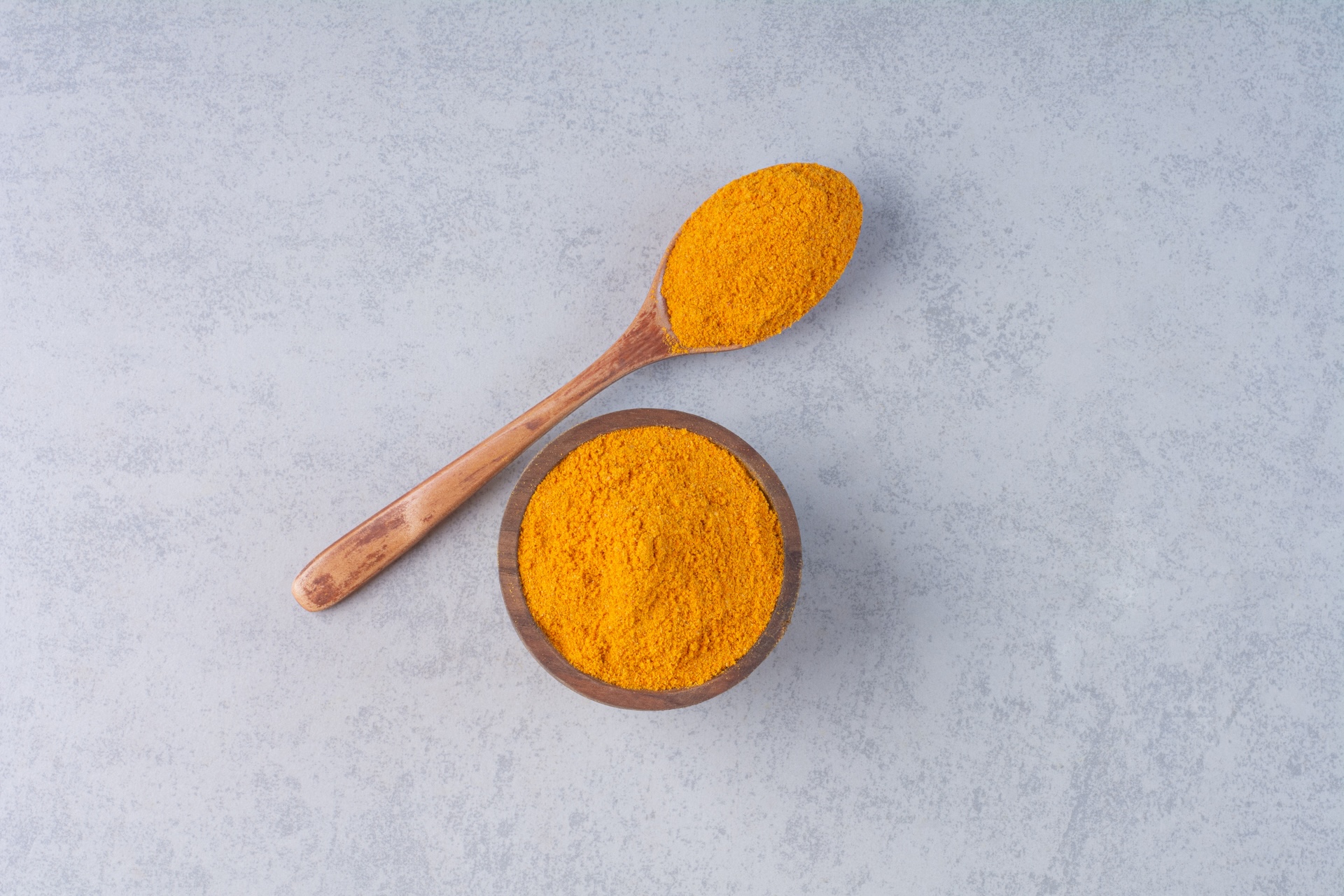Turmeric powder is a finely ground, bright yellow-orange powder made from the dried rhizomes of the turmeric plant (Curcuma longa), a member of the ginger family. The powder has a smooth texture, with particles that are evenly sized and free-flowing. It is known for its vibrant color, which can range from deep golden yellow to orange, depending on the variety and curcumin content of the turmeric rhizomes used.
Key Characteristics of Turmeric Powder:
Appearance: Bright yellow to deep orange, finely ground powder.
Texture: Smooth and free-flowing, without clumping.
Aroma and Flavor: Earthy, warm aroma with notes of ginger and a hint of citrus; a slightly bitter, peppery, and pungent taste.
Composition: Contains curcumin, the active compound responsible for its color and health benefits, along with essential oils and other phytonutrients.
Specification:
Uses:
Turmeric is a versatile spice used in Indian, Southeast Asian, and Middle Eastern cuisines. It adds a vibrant yellow color and earthy flavor to curries, rice dishes, soups, smoothies, and teas.
Benefits:
Turmeric is revered for its potential health benefits, including anti-inflammatory, antioxidant, and antimicrobial properties. It may also aid digestion, boost immunity, and promote skin health.
Cultivate Seasons for India:
Turmeric is predominantly cultivated during the kharif season in India, with sowing usually done in June-July and harvesting in October-November.
Our Services
Reliable Sourcing:
Reliable sourcing of turmeric fingers begins with selecting trusted suppliers who adhere to stringent quality standards. Premium turmeric is typically sourced from regions known for their high-quality turmeric production, such as India, particularly from states like Andhra Pradesh, Tamil Nadu, Odisha, and Maharashtra, where the soil and climate conditions are ideal for cultivating turmeric with a high curcumin content. Suppliers should be certified for organic farming and Good Agricultural Practices (GAP), ensuring the turmeric is grown without the use of synthetic pesticides or fertilizers. It is also crucial to verify that the turmeric is harvested at the right maturity level to maximize its flavor, color, and curcumin content. Partnering with reputable suppliers who perform thorough inspections and quality checks can ensure a consistent supply of high-grade turmeric fingers.
Premium Quality Assurance:
Premium quality assurance for turmeric fingers involves a series of rigorous tests and inspections throughout the production process. This includes verifying the purity of the turmeric fingers, ensuring they are free from contaminants, such as pesticides, heavy metals, and microbial agents. The turmeric should be tested for curcumin content, as a higher curcumin level is indicative of superior quality. Proper drying techniques are employed to maintain the natural color and flavor while preventing mold or mildew growth. The fingers are then carefully sorted, cleaned, and graded based on size, color, and overall appearance. Packaging in airtight, food-grade materials helps to preserve freshness and potency. Additionally, adherence to international food safety standards, such as ISO, HACCP, and FSSAI certifications, further guarantees that the turmeric fingers meet the highest quality benchmarks for global markets.
Process:
The processing of turmeric fingers begins with harvesting the rhizomes when the plant reaches maturity, usually 7-9 months after planting. After harvest, the rhizomes are thoroughly cleaned to remove soil and impurities, then boiled or steamed for 30-45 minutes to eliminate raw odor, reduce drying time, and enhance color. The boiled rhizomes are then dried, either under the sun for 10-15 days or in mechanical dryers for 12-15 hours, until they become hard and brittle. Once dried, the turmeric fingers are polished manually or mechanically to remove the outer skin and improve appearance, followed by grading and sorting based on size, color, and curcumin content. Rigorous quality testing is performed for moisture content, curcumin levels, and contaminants. The fingers are then packed in food-grade, moisture-proof packaging to preserve freshness and quality, labeled with essential details, and stored in cool, dry conditions until distributed to markets, ensuring they maintain their natural color, aroma, and health benefits.
Packaging, Shipping & Delivery
Packaging:
Bags and Pouches:
For Turmeric Powder, high-quality food-grade materials such as laminated multi-layer pouches (made of materials like PET, PE, BOPP, and Aluminum foil) are used. These bags are moisture-proof and help retain the freshness, flavor, and aroma of the spices. Zip-lock pouches, stand-up pouches, and resealable bags are also popular for smaller quantities.
Polypropylene (PP) Woven Bags:
These are the most common types of bags used for packaging large quantities (25 kg and 40 kg) of Turmeric Powder. They are made of woven polypropylene material, which is strong, lightweight, and durable, providing excellent resistance to tearing and damage during handling and transport.
Laminated Bags:
For additional protection against moisture and humidity, PP woven bags can be laminated with a layer of plastic film. This lamination creates a barrier against moisture, ensuring the spices stay dry and fresh during transportation and storage.
Multi-Wall Paper Bags:
These bags consist of several layers of kraft paper, which provide strength and are often lined with a plastic or polyethylene layer to offer protection against moisture and humidity. They are environmentally friendly and widely used in many markets for exporting food products.
Vacuum-Sealed Packaging:
This type of packaging removes air from the package before sealing, which helps prevent oxidation and moisture build-up, preserving the quality and extending the shelf life of the spices.
Paper or Carton Boxes:
After the packaging, the smaller bags or pouches are placed in corrugated cardboard cartons or paper boxes. These cartons are sturdy, stackable, and protect the contents from physical damage during handling and transportation.
Palletization and Wrapping:
Cartons or sacks are often stacked on wooden or plastic pallets and wrapped with stretch film or shrink wrap. This provides stability, reduces the risk of damage during transport, and makes handling more efficient.
Export Documentation:
Handle all necessary export documentation, including phytosanitary certificates, certificates of origin, and any specific certifications required by the importing country.
Efficient Shipping:
Partner with reliable freight forwarders and logistics companies to ensure timely and safe delivery of goods. Offer multiple shipping options (air, sea, or land) based on customer preferences.







1.jpg?raw=true)




1.jpg)











